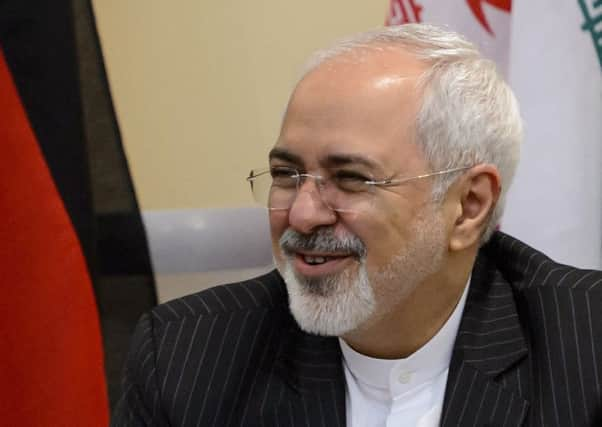Iranian foreign minister should be banned from Europe, not welcomed – Struan Stevenson


The left-wing press predictably went into meltdown, protesting in anger against the blacklisting of a foreign minister.
But few people expected President Macron of France to extend an invitation to Zarif to attend the G7 summit in Biarritz. This appeared to be a particularly provocative move by the French president, given that Donald Trump was also attending the conference in Biarritz.
Advertisement
Hide AdAdvertisement
Hide AdMacron’s invitation should have come as no surprise. He has positioned himself as Europe’s leading appeaser of the medieval, fascist Iranian regime. But, it is worth taking a closer look at why the US State Department took the action it did.
As Foreign Minister, Zarif is in charge of Iran’s army of ambassadors and diplomatic staff. In June 2018, he was therefore responsible for Assadollah Assadi, a diplomat from the Iranian Embassy in Vienna.
Assadi was allegedly instructed to hand over 500g of high explosives and a detonator to an Iranian couple from Antwerp. He allegedly ordered them to drive to Paris and detonate the bomb at a major rally organised by the National Council for Resistance in Iran (NCRI) and attended by more than 100,000 people.
A combined operation by the German, French and Belgian intelligence services led to the arrest of Assadi and the other conspirators, all of whom are now awaiting trial on charges of terrorism.
Despite the fact that the bomb plot was targeted on French soil, it has now emerged that President Macron, in a grovelling act of appeasement, attempted to subvert any leak of the news, in case it upset his friends in Tehran. Happily, his efforts failed and the plot was quickly exposed.
Ironically, the senior diplomat whom Assadi had replaced in the Vienna Embassy was Mostafa Roodaki, another trained MOIS agent. He had previously been the head of the Iranian regime’s intelligence station in Austria and had been coordinating activities against the Mojahedin e-Khalq/ People’s Mojahedin of Iran (MEK/PMOI), the main opposition to the mullahs across the whole of Europe.
Roodaki had been redeployed to Albania by Zarif, with the rank of First Secretary in the Iranian Embassy in Tirana. He was joined there by a new ambassador appointed by Zarif, Gholam Hossein Mohammadinia, a former high-ranking Iranian intelligence official who had also been a member of the Iranian nuclear negotiating team.
Albanian intelligence officers uncovered a plot to bomb a Nowruz (Iranian New Year) gathering of MEK/PMOI members in Tirana. Two MOIS agents, together with Ambassador Mohammadinia and First Secretary Roodaki, were expelled by the Albanian Prime Minister Edi Rama.
Advertisement
Hide AdAdvertisement
Hide AdThese were not the only terror plots. In October 2018, the Iranian regime sent another senior MOIS agent – Mohammad Davoudzadeh Lului – with close ties to the Iranian embassy and its ambassador in Norway, to assassinate an opposition figure in Denmark. He too now awaits trial on terrorism charges. Also, in 2018, two Iranian diplomats were expelled from the Netherlands for acts of terror.
With this catalogue of assassinations and bomb plots, it is not surprising that the US has decided to take action.Yet the West continues to believe that his mastery of English and his benign smile mean that he must be a trustworthy moderate with whom we can negotiate.
Struan Stevenson is coordinator of the Campaign for Iran Change (CiC). He was an MEP representing Scotland (1999-2014), president of the Parliament’s Delegation for Relations with Iraq (2009-14) and chairman of Friends of a Free Iran Intergroup (2004-14). He is an international lecturer on the Middle East and is also president of the European Iraqi Freedom Association (EIFA)